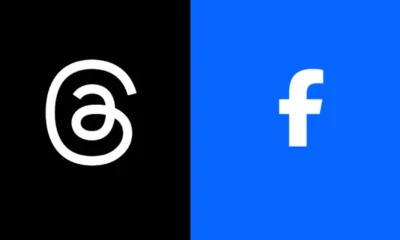MARKETING
The Best Time to Post on Social Media in 2022 [Data from 300+ Marketers]
Social media is one of the best ways to amplify your brand and the great content you’re creating. But it isn’t enough to just post content to social whenever you feel like it – posting at some times performs better than others.
So, what are the best times to post on each social media channel in 2022? We surveyed over 300 social media marketers in the United States and got the answer.
Best Times to Post on Social Media
According to our 2021 survey of 300+ marketers, the best times to post on social media – across all industries and platforms – are 6 p.m. to 9 p.m. and 3 p.m. to 6 p.m.. The best days to post are typically on weekends, specifically Saturdays.
Before we get into the specifics for each platform, it’s important to note that for our survey, we asked respondents to answer in their current time zone – with 38% of respondents located in the Eastern time zone. Keep this in mind as you review the information and see how that is applicable to your brand.
Best Time to Post on Instagram
In 2022, Instagram has surpassed 2 billion monthly users, with most of its base accessing the platform via mobile.
![The Best Time to Post on Social Media in 2022 [Data from 300+ Marketers] Best Time To Post on Instagram](https://articles.entireweb.com/wp-content/uploads/2022/05/The-Best-Time-to-Post-on-Social-Media-in-2022.jpg)
- On average, the best times to post on Instagram across industries are in the mid- to late afternoon, specifically between 6 and 9 p.m., 3 and 6 p.m., and 9 and 12 p.m.
- The best day to post on Instagram is Saturdays. The worst is on Mondays. However, when comparing B2C and B2B brands, the former report Saturdays as the best day while the latter say it’s Friday.
- The worst times to post are:
- 6 a.m. to 9 a.m.
- 9 p.m. to 12 a.m.
- 12 p.m. to 3 p.m.
One industry that reports a lot of success in the 12-3 p.m. time frame is manufacturing and materials, with 50% surveyed saying it’s the best time to post.
Best Time to Post on Facebook
When it comes to best times to post, marketers report almost identical numbers on Facebook as they do on Instagram.
![The Best Time to Post on Social Media in 2022 [Data from 300+ Marketers] Best Time To Post on Facebook](https://articles.entireweb.com/wp-content/uploads/2022/05/1652103793_599_The-Best-Time-to-Post-on-Social-Media-in-2022.jpg)
- On average, the best times to post on Facebook across industries are in the mid- to late afternoon, specifically between 6 and 9 p.m., 3 and 6 p.m., and 9 and 12 p.m.
- The best day to post on Instagram is Saturdays. The worst is on Mondays.
- The worst times to post are:
- 6 a.m. to 9 a.m.
- 9 p.m. to 12 a.m.
- 12 p.m. to 3 p.m.
Industries that have more success posting early morning are agriculture, food, and beverage brands, with 50% choosing 9 a.m. to 12 p.m. as the best time to post on Facebook. In addition, 100% of marketers surveyed from travel and hospitality brands also chose this time frame.
Best Time to Post on Twitter
This text-based social media platform is known to draw early morning users who use the app to get their news and night owls looking to share their late-night thoughts.
However, the data suggests that the best time to reach users is the afternoon, between noon and 9 p.m.
![The Best Time to Post on Social Media in 2022 [Data from 300+ Marketers] Best Time To Post on Twitter](https://articles.entireweb.com/wp-content/uploads/2022/05/1652103794_180_The-Best-Time-to-Post-on-Social-Media-in-2022.jpg)
- 27% of marketers surveyed say 6 p.m. to 9 p.m. is the best time to post on the platform, followed by 3 p.m. to 6 p.m., then noon to 3 p.m.
- Unlike Instagram and Facebook, Friday is the best day to post on the platform.
- Worst times? Early morning. Specifically 6 a.m. to 12 p.m.
Best Time to Post on LinkedIn
Roughly 28% of U.S. adults use LinkedIn to network and share their professional endeavors. It’s no surprise that it’s the only social platform to report a weekday as one of the top days to post.
![The Best Time to Post on Social Media in 2022 [Data from 300+ Marketers] Best Time To Post on LinkedIn](https://articles.entireweb.com/wp-content/uploads/2022/05/1652103794_86_The-Best-Time-to-Post-on-Social-Media-in-2022.jpg)
- Aim to post on LinkedIn between 6 – 9 p.m., 3 – 6 p.m., or 12 – 3 p.m.
- The best day to post is Saturdays, Sundays, and Wednesdays.
- The lowest-performing days are Mondays and Fridays.
Best Time to Post on Pinterest
- The best times to post on Pinterest are between 6 p.m. to 9 p.m.
- The second most popular time is noon to 3 p.m., selected by marketers surveyed in construction, financial services, agriculture, food and beverage, chemicals and metals, consumer product manufacturing, plus travel and hospitality.
- 22% of B2C brands say Sundays are the best days to post on Pinterest, compared to only 6% of B2B brands. Conversely, only 2% of B2C brands chose Mondays versus 13% of B2B brands.
Best Time to Post on YouTube
Over 80% of U.S. adults use YouTube and data from a 2021 Pew Research study suggests that its reach is growing. So, how can you get the best reach on the platform? Let’s dive in.
![The Best Time to Post on Social Media in 2022 [Data from 300+ Marketers] Best Time To Post on YouTube](https://articles.entireweb.com/wp-content/uploads/2022/05/1652103794_451_The-Best-Time-to-Post-on-Social-Media-in-2022.jpg)
- Post between 6 p.m. and 9 p.m. (31%), 3 to 6 p.m., and noon to 3 p.m.
- 25% of marketers surveyed recommend posting on Saturdays while 23% say Friday is the best day to post.
- Monday through Wednesday are the worst days to post on the platform, along with early mornings from 6 a.m. to 9 a.m.
The most popular time frame for advertising/marketing, electronics, and financial services brands is 3 p.m. to 6 p.m.
Best Time to Post on TikTok
Since 2020, TikTok has become the go-to short-form video platform for Gen-Z and Millennial consumers.
![The Best Time to Post on Social Media in 2022 [Data from 300+ Marketers] Best Time To Post on TikTok](https://articles.entireweb.com/wp-content/uploads/2022/05/1652103794_131_The-Best-Time-to-Post-on-Social-Media-in-2022.jpg)
- The best times to post are 6 to 9 p.m., 3 to 6 p.m., and 12 to 3 p.m.
- For B2B brands, Saturdays and Thursdays are the best days to post. For B2C brands, it’s Saturdays and Sundays.
- Although transportation and financial services brands seem to find success in posting between 6 to 9 a.m., most marketers don’t recommend it.
- The worst day to post on TikTok is Tuesday, followed by Monday, then Thursday.
Creating an Effective Posting Schedule
Although each social network sees its engagement increase at specific hours and days of the week, you’ll still have to tailor your approach to your audience.
Use this data as a guide if you don’t have enough data yet. Once you start posting regularly and have collected data, review it to determine when your audience is most active on the platform and what posting schedule they respond to the most.
You may find that certain content types work better when posted at certain times. For instance, your videos may perform well when posting in the morning while your images may do better in the late afternoon.
Editor’s note: This post was originally published in 2017, but was updated for comprehensiveness.

![The Best Time to Post on Social Media in 2022 [Data from 300+ Marketers] New call-to-action](https://articles.entireweb.com/wp-content/uploads/2022/01/1641334353_566_Are-Brands-Investing-in-Social-Media-Communities-in-2022-We.png)

















You must be logged in to post a comment Login